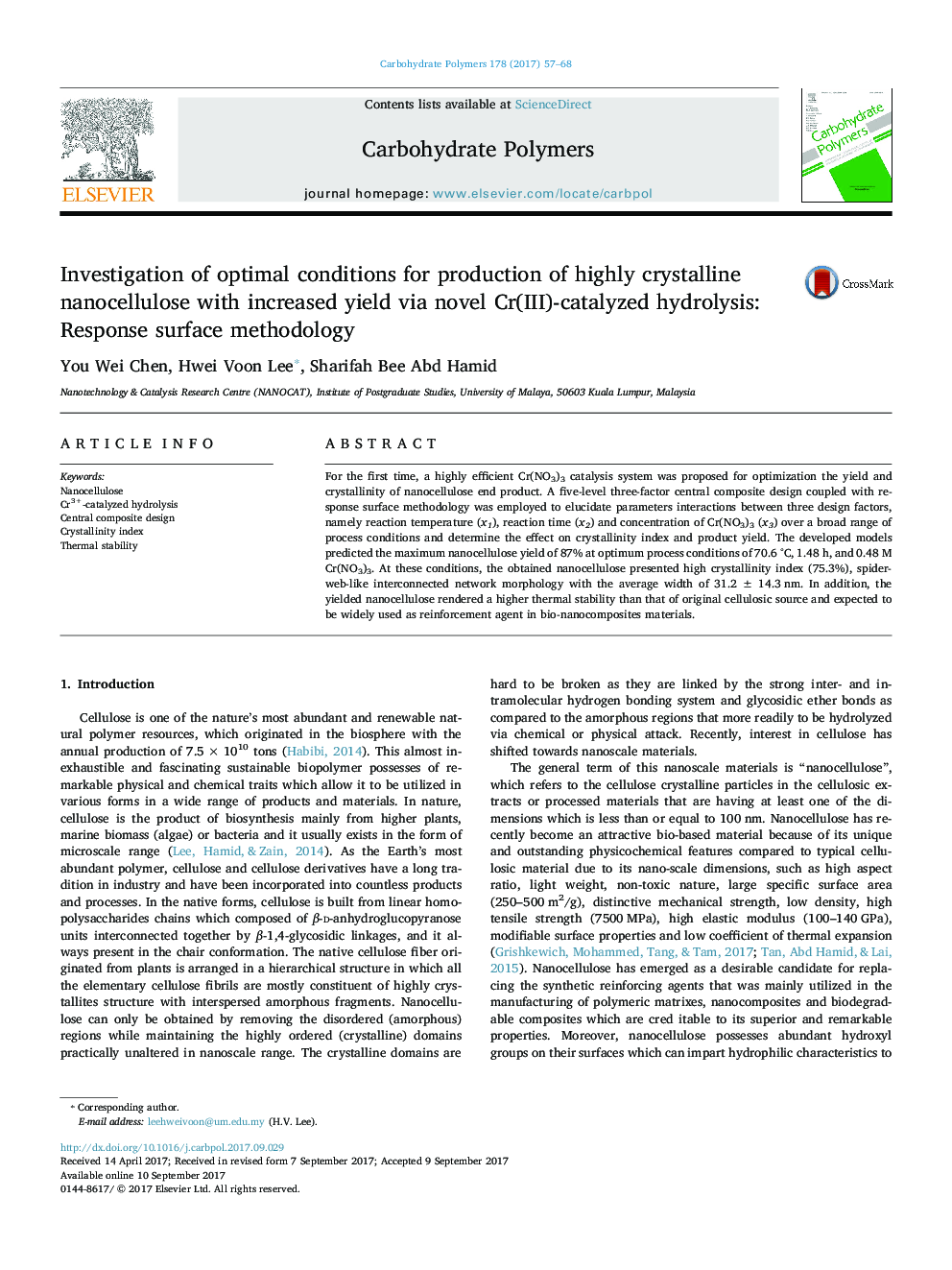| Article ID | Journal | Published Year | Pages | File Type |
|---|---|---|---|---|
| 5156729 | Carbohydrate Polymers | 2017 | 12 Pages |
Abstract
For the first time, a highly efficient Cr(NO3)3 catalysis system was proposed for optimization the yield and crystallinity of nanocellulose end product. A five-level three-factor central composite design coupled with response surface methodology was employed to elucidate parameters interactions between three design factors, namely reaction temperature (x1), reaction time (x2) and concentration of Cr(NO3)3 (x3) over a broad range of process conditions and determine the effect on crystallinity index and product yield. The developed models predicted the maximum nanocellulose yield of 87% at optimum process conditions of 70.6 °C, 1.48 h, and 0.48 M Cr(NO3)3. At these conditions, the obtained nanocellulose presented high crystallinity index (75.3%), spider-web-like interconnected network morphology with the average width of 31.2 ± 14.3 nm. In addition, the yielded nanocellulose rendered a higher thermal stability than that of original cellulosic source and expected to be widely used as reinforcement agent in bio-nanocomposites materials.
Related Topics
Physical Sciences and Engineering
Chemistry
Organic Chemistry
Authors
You Wei Chen, Hwei Voon Lee, Sharifah Bee Abd Hamid,
